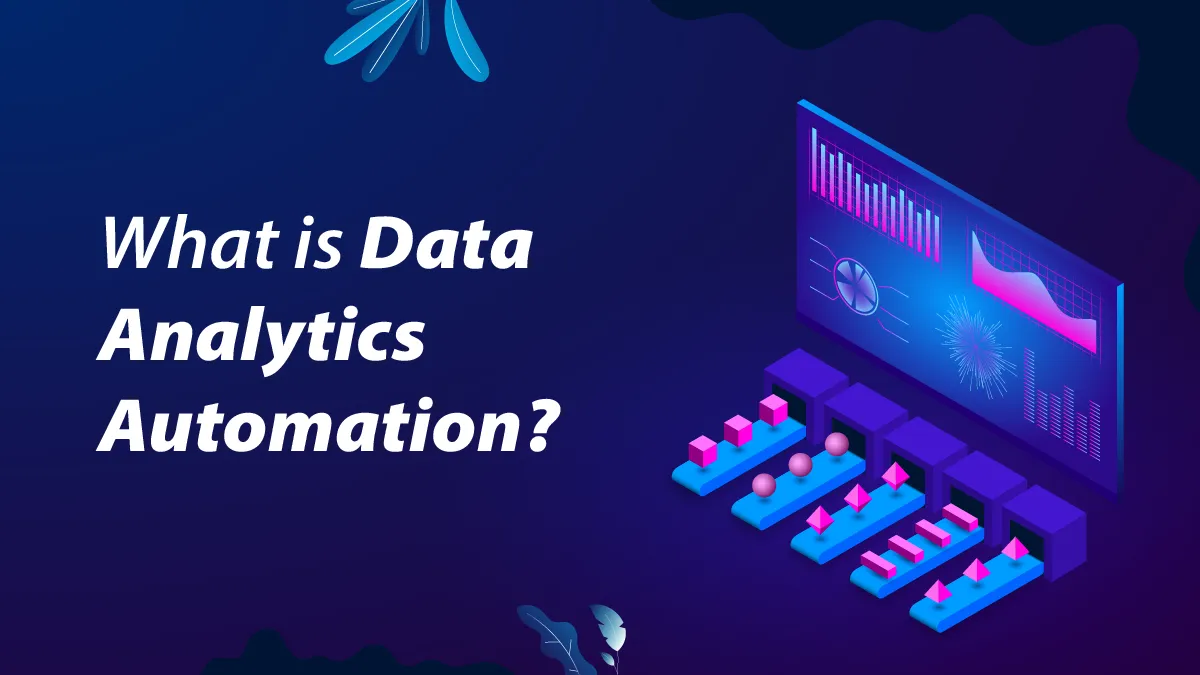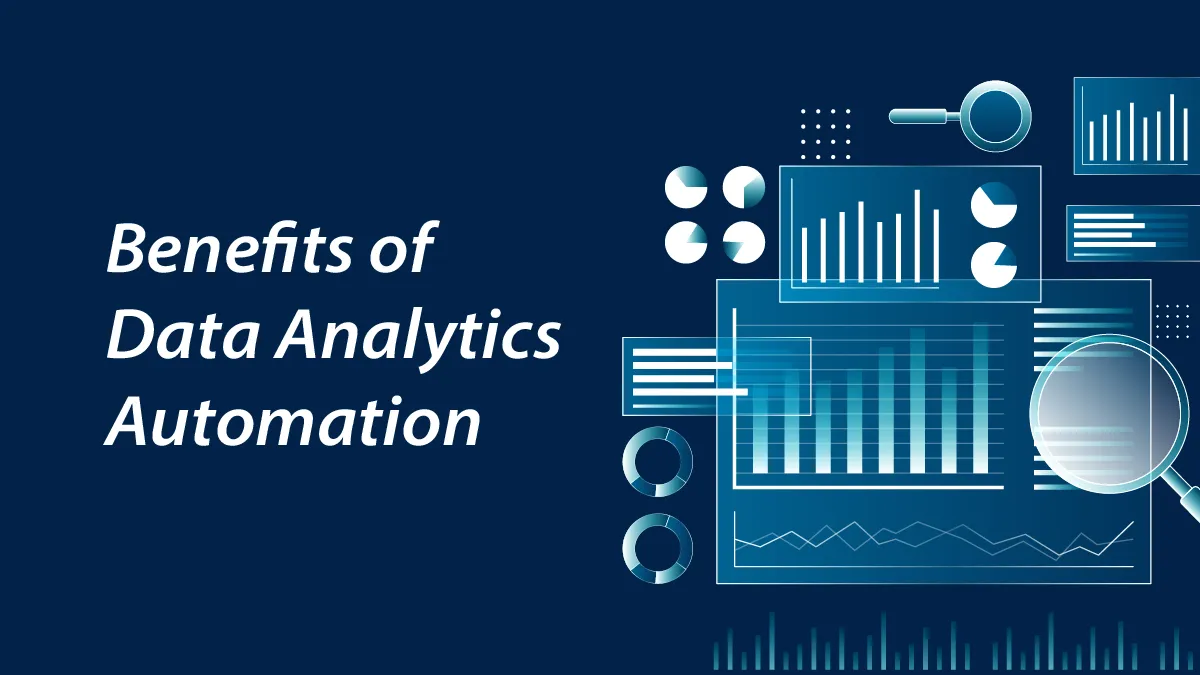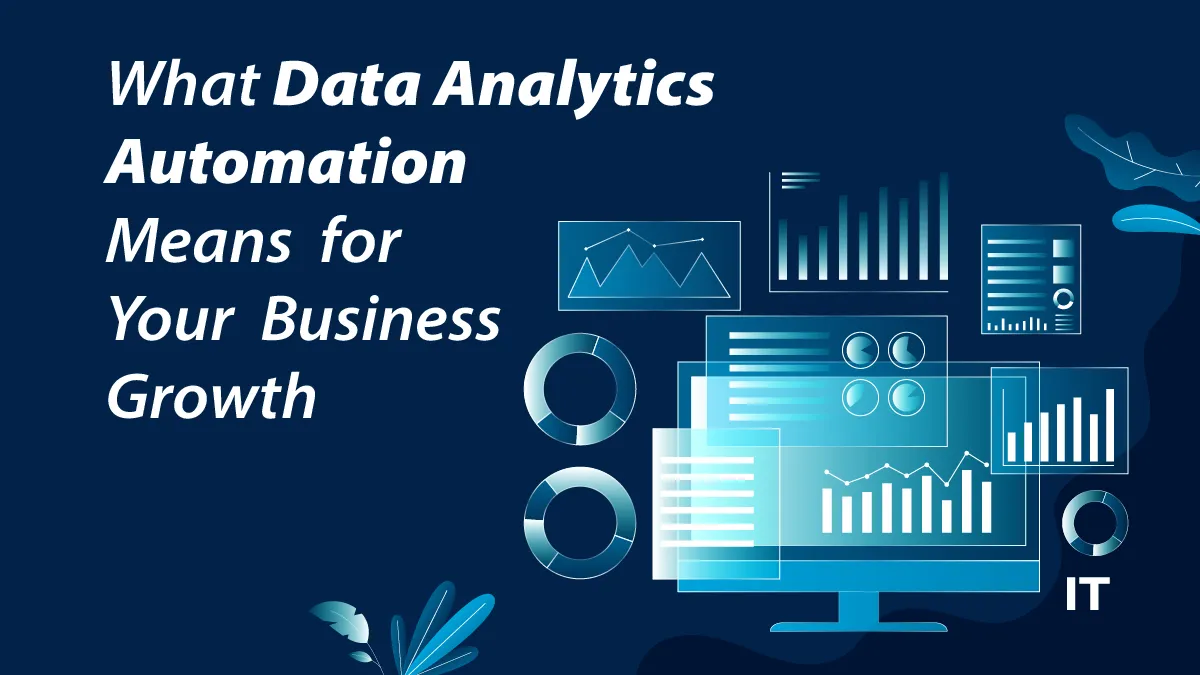What if you could unlock insights from mountains of data in a fraction of the time, with minimal manual effort?
In today’s fast-paced, data-driven world, businesses are drowning in information. Yet, turning that raw data into actionable insights remains a challenge for many. Enter data analytics automation—a game-changing approach that combines advanced tools and technologies to streamline data processing, eliminate repetitive tasks, and supercharge decision-making.
Here’s what we will cover in this blog:
- What is data analytics automation
- What are the benefits of automated analytics
- How to automate data analytics
- Top 5 data analytics automation tools
Now let’s dive in.
What is Data Analytics Automation?
 Data analytics automation is the technique of employing computer methods and procedures to carry out analytical activities with little to no human involvement is known as automated data analytics. Automating data analytics procedures can help a lot of businesses. For instance, an interactive dashboard may be updated automatically by a reporting pipeline that currently requires analysts to create reports by hand.
Data analytics automation is the technique of employing computer methods and procedures to carry out analytical activities with little to no human involvement is known as automated data analytics. Automating data analytics procedures can help a lot of businesses. For instance, an interactive dashboard may be updated automatically by a reporting pipeline that currently requires analysts to create reports by hand.
When working with large data, automation in data analytics is especially helpful. It may be applied to a number of tasks, including data preparation, data replication, data discovery, and data warehouse management.
The level of complexity of automated analytics systems varies. They range from simple scripts that match records to a pre-made data model to comprehensive tools that carry out statistical significance tests, feature discovery, exploratory data analysis, and model selection.
Benefits of Data Analytics Automation
 When opposed to manual data analysis, automating data analysis offers the following main advantages:
When opposed to manual data analysis, automating data analysis offers the following main advantages:
Time savings: Compared to humans, automated systems can gather, process, and analyze data much more quickly. As a result, analysts can dedicate more time to interpretation and decision-making rather than tedious data activities.
Enhanced productivity: Automation reduces redundancy and bottlenecks in workflows. Systems can process more data at faster speeds and operate around the clock.
More frequent insights: Automation allows studies to be performed regularly or even in real-time, whereas earlier they would have taken weeks or months. Faster reaction to trends and new patterns is made possible by more frequent reporting.
Increased data accuracy: Automated systems handle data with consistent logic and are less likely to make mistakes due to human error. They are able to process greater volumes of data with better quality standards and absorb data from more sources.
Improved scalability: Automation offers the scalability to increase capacity as required as data volumes increase. Automation makes it easy to add data sources or increase the frequency of analysis. It is more difficult to scale manual analysis.
Also Read: 10 Must-Have Open Source Collaboration Tools to Power Up Your Team
How to Automate Data Analytics
Finding opportunities to use automation, choosing the appropriate tools, creating automated workflows, and keeping an eye on your automation are all part of automating data analytics.
Here are some great tips for automating your data analytics process:
Identify Automation Opportunities
- Look for manual, repetitive operations that can be automated, such as calculations, reporting, and data collection. They are excellent candidates for automation.
- Data profiling, computations, visualizations, and report creation are examples of Exploratory Data Analysis (EDA) tasks that can be automated.
- Instead of performing these tasks by hand, automate the model training, evaluation, and comparison processes.
- Automate machine learning model retraining, monitoring, and alerting.
Select the Right Tools
- ETL and ELT tools are comprehensive solutions that can automate data transformation, transfer, and collection throughout your technology stack.
- Libraries, notebooks, and Python scripts are among the options.
- Use BI products that provide scheduling and alerting capabilities to automate reports and dashboards.
- Services to orchestrate automated processes are offered by cloud platforms such as AWS and GCP.
Develop Automated Workflows
- Divide analytics procedures into distinct, automatable steps.
- Create the workflow by starting with unprocessed data inputs and finishing with the desired outcomes.
- Combine all of the automated elements into a comprehensive workflow.
Schedule and Monitor Automation
- To execute workflows on a predetermined timetable, use workflow schedulers.
- Notifications for workflow failures and other problems are included in. proactively keep an eye on automation.
- Always strive to do better and find new ways to automate analytics procedures.
- As the needs for analytics evolve, make sure automated processes adjust accordingly.
Although it requires an initial investment, automating data analytics benefits data scientists and analysts by increasing their productivity, consistency, and efficiency. To begin utilizing automation in your analytics procedures, follow these steps.
Data Analytics Automation Tools
1. Apache Airflow
Data teams can programmatically author, orchestrate, monitor, and version intricate analytical workflows with the aid of Airflow. Large workloads are reliably handled by its fault-tolerant architecture. The open-source workflow orchestration platform Airflow allows for the programmatic authoring, scheduling, monitoring, and coordination of complex programmed data pipelines that are represented as directed acyclic graphs. It integrates with well-known data sources, data services, and execution orchestration engines and facilitates process automation, workflow logic visualization, and lineage tracking.
2. SQL
Structured Query Language, or SQL, is the foundation of automated data analytics. For durable data store, management, retrieval, and querying, SQL is the widely used ANSI standard relational database programming language. In order to gather, analyze, and manage data at scale across popular commercial and open-source database systems, such as Oracle, Microsoft SQL Server, MySQL, PostgreSQL, and others, it makes use of simple, declarative terminology.
3. AWS Glue
With the help of user-friendly editors, AWS Glue’s serverless Spark-based ETL (extract, transform, and load) solution in the cloud allows data teams to automate data preparation.
In order to enable consistent access across data lakes and warehouses, AWS Glue is a fully managed data engineering service that offers sophisticated ETL capabilities using machine learning to dynamically scan different data sources, infer schemas, transform, enrich, and load data into analytical data storage.
4. Python
Python is a general-purpose, interpreted programming language that is excellent for data analysis, ETL, machine learning, and scientific computing. It has a large ecosystem of robust open-source libraries that offer effective features for loading, preparing, transforming, analyzing, and modeling data at scale, as well as quick prototyping, simple system integration, effective data structures, and a robust community to speed up analytics automation.
5. Databricks
Databricks provides a Spark-optimized analytics platform that is suited to data teams’ processes and cooperatively integrates engineering, science, and business responsibilities. Users may combine data engineering, science, and analytics in large data sets connected across AWS, Azure, and Google Cloud data object stores and services with Databricks’ safe, collaborative, cloud-based platform, which is tailored for Lakehouse architecture.
Summing it Up
Data analytics automation is no longer just a trend; it’s a vital tool for businesses looking to stay competitive in a data-driven world. By automating data processes, organizations can unlock faster, more accurate insights, reduce human error, and empower teams to focus on strategic decision-making. As automation technology continues to evolve, the opportunities to enhance efficiency and drive growth will only increase.
Embracing data analytics automation isn’t just about keeping up—it’s about staying ahead. Whether you’re looking to optimize operations, gain deeper insights, or simply reduce the complexity of your data workflows, automation offers the potential to transform the way you work with data. The future of analytics is automated, and businesses that adopt this shift now will be well-positioned to lead in the years to come.
































